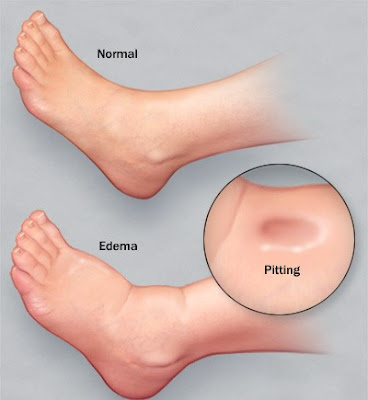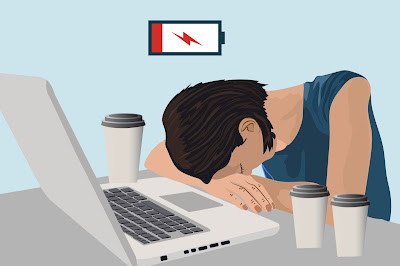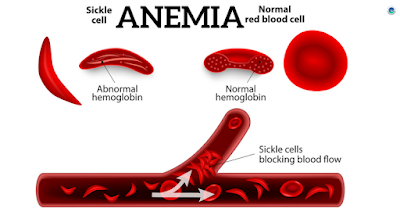Hello there, everyone! This post is about the signs and symptoms of kidney disease, also known as renal disease. Therefore, we'll go through a wide range of signs and symptoms that we can notice in the early stages of the disease, from early kidney disease to renal or kidney failure.
The Signs and Symptoms
1. Urination changes
So the first one I'd
like to discuss is urination changes,
which makes sense because if there's a problem with the kidneys, we can have
urination changes, such as increased or
decreased urine volume. So, in some renal disorders, we can find increased
urination or urine volume, which means patients
may have to urinate more frequently, and in more advanced stages of kidney disease, we commonly see lower urination or urine volume. Foamy urine can be caused by a variety
of renal diseases, and it indicates that there is the protein in your urine, as well as the presence of blood in the
urine (hematuria).
2. Pitting edema
Peripheral edema
is the next symptom we'll discuss. So this is how peripheral edema appears.
This is called "pitting edema,"
so if you look at an individual's legs and find a lot of interstitial fluid
where it shouldn't be, and you push your finger on that spot and release it,
you will see pitting. That's what we call "pitting edema." As a
result, this is due to fluid or volume
overload. So, if an individual is not urinating or losing enough volume
through their renal system, they can have volume overload, which can lead to a
greater volume of fluid in their interstitial areas, and we frequently see this
in the periphery, so in their lower limbs. Nephrotic
syndrome is another example of this. So nephrotic syndrome is a type of
kidney illness in which there are a lot
of protein losses, especially albumin loss; albumin is the most abundant
protein in your blood and it helps reabsorb interstitial fluid or fluid that
isn't intended to be in your tissues, back into the circulation. However, if
albumin levels in the blood drop, as they do in nephrotic syndrome, there won't
be enough albumin in the blood to help reabsorb part of the fluid.
 |
| Pitting Edema |
3. High Blood Pressure-Hypertension
Hypertension, or high blood pressure, is the next
symptom of renal disease. This is related to increased intravascular volume; if a person does not urinate enough, their intravascular
volume might increase, resulting in an increased volume of fluid in their
cardiovascular system, resulting in hypertension or high blood pressure.
4. Shortness of breath-Dyspnea
Another sign of kidney
illness is dyspnea, or shortness of breath, which is typically
caused by the same factors. Again, if there is a volume overload, we can see peripheral
edema and hypertension, and this can even lead to increased fluid or volume within the chest cavity (so within the
thorax), and the additional fluid can surround the lungs, creating breathing
problems, as well as chest pain in
these people.
5. Difficulty Sleeping
Other signs and symptoms
of kidney disease include difficulty
sleeping; this is due to increased
toxins, so people may complain of not
being able to fall asleep, having problems sleeping, or being very tired during
the day. This leads to the next symptom that people with kidney disease
frequently experience, which is fatigue.
6. Fatigue
As a result, they are
frequently tired throughout the day. Because of the elevated toxins, there is a lot of daytime sleepiness. As a result,
the kidney filters and excretes a large number of pollutants. Toxins can build
up in the body if the kidneys aren't performing properly, resulting in
exhaustion. Patients may also be exhausted due to anemia. In a moment, we'll discuss anemia as a result of renal
disease, and exhaustion may be related to what we just discussed about
difficulties sleeping, sleeping issues, increased toxins, and then there's this
anemia.
7. Muscle Twitching and Spasms
Muscle twitching and spasms are the next symptoms that a person may encounter.
Electrolyte abnormalities are frequently to blame. So the kidney is crucial in balancing many electrolytes in our
bodies, and electrolyte imbalances can cause muscle contraction problems as
well as spontaneous muscle twitching and spasms. Low calcium and high phosphate
levels are common in kidney illness, and both can cause muscular spasms and
twitching.
8. Low Red Blood Cells or Hemoglobin-Anemia
Anemia can be seen
in kidney disease, as we previously noted. Low
red blood cells or hemoglobin indicate anemia caused by chronic renal
disease. As a result, this usually happens later in the course of kidney
disease. So, chronic kidney disease occurs because the kidney generates erythropoietin
or EPO ("EPO"), which encourages the bone marrow to make red blood
cells (erythrocytes), and as the kidney becomes increasingly damaged, it loses its ability to produce erythropoietin.
So it generates less and less EPO, or erythropoietin, resulting in fewer red blood cells being generated,
resulting in chronic kidney disease anemia. As a result, anemia is common in
chronic renal disease.
9. Increased urea in the blood-Uremia
Now, we've established
that the kidneys are critical for excreting several toxins and maintaining
electrolyte balance, and one such toxin is urea, which the kidneys ordinarily
filter and expel. Urea is a breakdown product of protein metabolism, and kidney
failure causes an increase in urea in
the blood, which is known as uremia.
As a result, elevated, unusually high amounts of urea in the blood, as well as
uremia (excess urea in the blood in our bodies), can cause a variety of
significant signs and symptoms that we must detect.
9. Inflammation of the Pericardium-Uremic Pericarditis
One of them is uremic pericarditis, in which uremia
can induce pericarditis "itis" (pericardial inflammation), in which
uremia can cause inflammation of the
pericardial layers as well as other metabolic poisons. So we see
individuals with chest pain, which
is often positional and possibly pleuritic.
10. Altered Mental Status-Uremic Encephalopathy
Uremia can also cause uremic encephalopathy, which we find in
individuals with advanced kidney disease.
This encephalopathy can cause altered
mental status, including delirium
and confusion in these patients. Asterixis
is also linked to uremic encephalopathy. When someone develops uremic
encephalopathy, they may get this symptom known as asterixis.
11. Tremor flap-Asterixis
What exactly is asterixis? It's actually a tremor flap at the wrist, so a
clinician will ask a patient to put their arms straight out in front of them,
lift their wrist like this, and close their eyes. If the patient lets go of
their hand or lose control, it falls here, and they'll quickly bring it back up
into the original position, which looks like a tremor flap. So it can be seen
in both hands and is linked to metabolic illnesses, such as uremic
encephalopathy, but it can also be seen in liver diseases.
12. Very Itchy Dry Skin-Pruritis
Pruritis is
another symptom we encounter in renal disease patients. Pruritis is defined as
an itching sensation. So much dry, itchy skin. This is related to uremia, which can make a patient itchy
in almost every part of their body, and this can lead to excoriations, or
scratch marks, on many regions of their body, so we can view this as a marker
of renal illness as well. Uremic
pruritis is another name for this condition. As a result, elevated urea in the blood causes itching.
13. Nausea and Vomiting
Uremia can also cause nausea and vomiting, among other signs
and symptoms. Patients with severe renal
disease are frequently nauseated and in poor health. Again, uremia is to blame, and it can lead to anorexia or weight loss.
14. Weight loss-anorexia
As a result of the uremia, which is ultimately produced by
nausea and vomiting, patients can
become very thin again, with a very low or diminished appetite.
15. Low platelet count-platelet dysfunction
Another crucial topic to
consider is platelet dysfunction,
which is caused by uremia. Even if
platelets appear to be in a normal range or level, they may be dysfunctional,
which can manifest as thrombocytopenia
or a low platelet count.
16. Bleedings and Red or
Purple Spots on the Skin
Patients with platelet dysfunction due to uremia may
experience increased gingival bleeding,
or bleeding of the gums of the mouth, increased cutaneous bleeding, which
can be difficult to stop if they cut
themselves on their hand, epistaxis,
or nose bleeding, petechiae, and purpura, which are small red and purple spots on the skin.
So this is superficial skin bleeding and simple bruising, so they can lightly
slap their arm on a surface and it will bruise quickly. All of these symptoms
point to platelet dysfunction. Again, uremia has caused platelet dysfunction.
Again, uremia has caused platelet dysfunction. Gingival bleeding, cutaneous
bleeding, epistaxis, petechia, purpura, and easy bruising are all common, and
we can also find an elevated risk of
excessive bleeding after menstruation, operations, and deliveries.
So, I hope you found this post to be educational and helpful. Please give it a thumbs up if you liked it. Please follow us if you want more information on various diseases and their associated signs and symptoms. Thank you so much, and I hope to see you again soon!














0 Comments